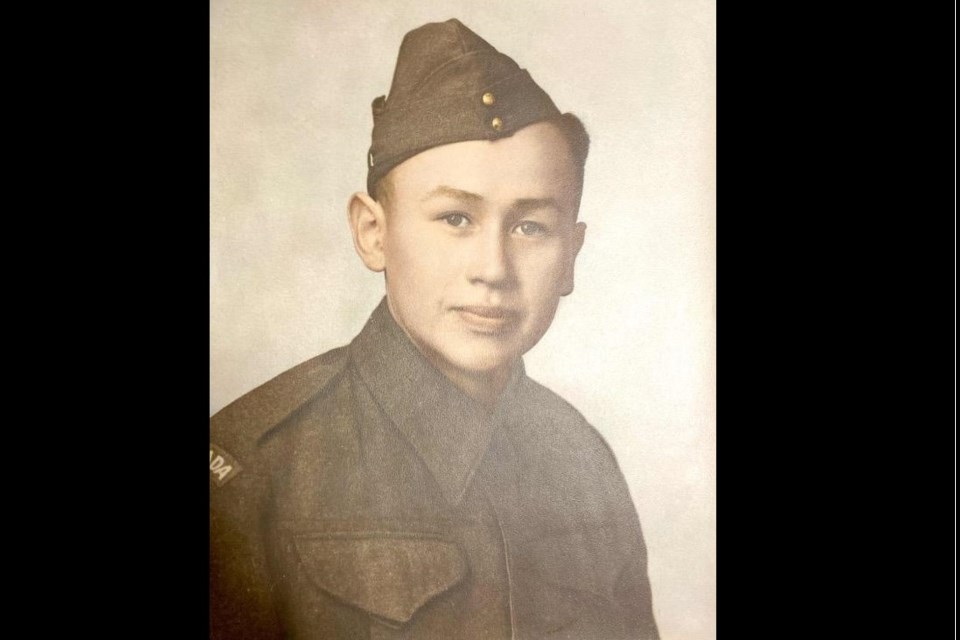Our story was kindly gifted to us by Elder Bertha Williams, the aunt of Tanya Corbet, Sedgwick Strategies’ senior consultant. Thank you, Bertha, for allowing us to tell the story of Walter “J. J.” Williams.
Tanya’s father, former Chief of Tsawwassen First Nation, was named after Walter — Walter Williams — and her son carries the family middle name, James Corbet.
Nov. 8, 2021 is Indigenous Veterans Day in Canada.
Indigenous Veterans Day marks the important contributions made by First Nations, Inuit, and Métis veterans in service to Canada. Our country is indebted to them for their sacrifices, and for the impacts their service has had on their families and communities.
From the War of 1812 to the Second World War to Afghanistan, and beyond, Indigenous peoples have served in times of war and peace for more than 200 years.
However, for too long that service has often been overlooked and underappreciated. Indigenous Veterans Day was first recognized in Winnipeg in 1994 when Indigenous veterans were not recognized in Remembrance Day activities; it is commemorated across the country today.
The story of Walter Williams
Born June 6, 1924, Walter John James Williams was a member of the Tsawwassen First Nation who, in 1943, was 19 when he was drafted in the Canadian Army.
Walter attended Sechelt Indian Residential School. Walter met his wife, Louisa Williams, formally Louisa Thomas, of Seabird Island Reserve, while working at a cannery near Sechelt. Walter and Louisa were married on Dec. 30, 1943.
Walter’s mother was Bertha Point, a member of the Musqueam Nation. His father was August Williams, a member of the Tsawwassen Nation. Walter had one brother, Harold Williams.
Representing Tsawwassen First Nation, Walter Williams enlisted in the Canadian Army on Oct. 25, 1943, and completed his army training in Vancouver.
Following his training, Walter volunteered for active service in the spring of 1944. He was deployed as a rifleman in April 1944 to fight on behalf of Canada in France.
Only three months after being deployed, Walter Williams died on Aug. 19, 1944 from wounds received while fighting in France. He was believed to be the first Indigenous person from the Lower Mainland in B.C. to lose his life in the Second World War.
The Memorial Cross
Often referred to as the Silver Cross, the Memorial Cross was first instituted by Order-in-Council 2374, dated Dec. 1, 1919. It was awarded to mothers and widows of Canadian soldiers who died on active duty or whose death was consequently attributed to such duty.
The crosses were sent automatically to mothers and wives who qualified, and could be worn by the recipients anytime, even though they were not themselves veterans. The cross was engraved with the name, rank, and service number of the son or husband.
Each year on the same date, the Book of Remembrance is opened to the page where Walter’s name is listed.
Walter Williams' name is on the Ladner Memorial Park Cenotaph, where Tsawwassen First Nation lays a wreath every year.
According to Veterans Affairs Canada, in the Second World War, more than 3,000 First Nations members, Métis, and Inuit recruits had served by the end of the war. Many Indigenous soldiers filled a unique role during the Second World War, as “code talkers” — sending messages to each other in Cree so they could not be understood by enemies who might intercept the transmission.
Where can I learn more?
Learn more about Indigenous veterans and initiatives that support Indigenous veterans:
- Veterans Affairs Canada
- Aboriginal Veterans Tribute Honour List
- Indigenous War Heroes
- The Canadian Encyclopedia: Indigenous People and the World Wars
- Aboriginal War Heroes — More Than a Few Good Men (Bob Joseph)
- Aboriginal Veterans Autochtones
You can also donate to Indigenous veterans:
We also encourage you to reach out to your neighbouring Indigenous communities to learn if they have in-person or online events that are open to the public, or simply ask if they can be supported in any way.



